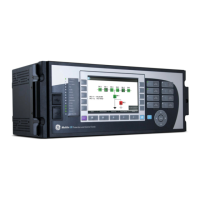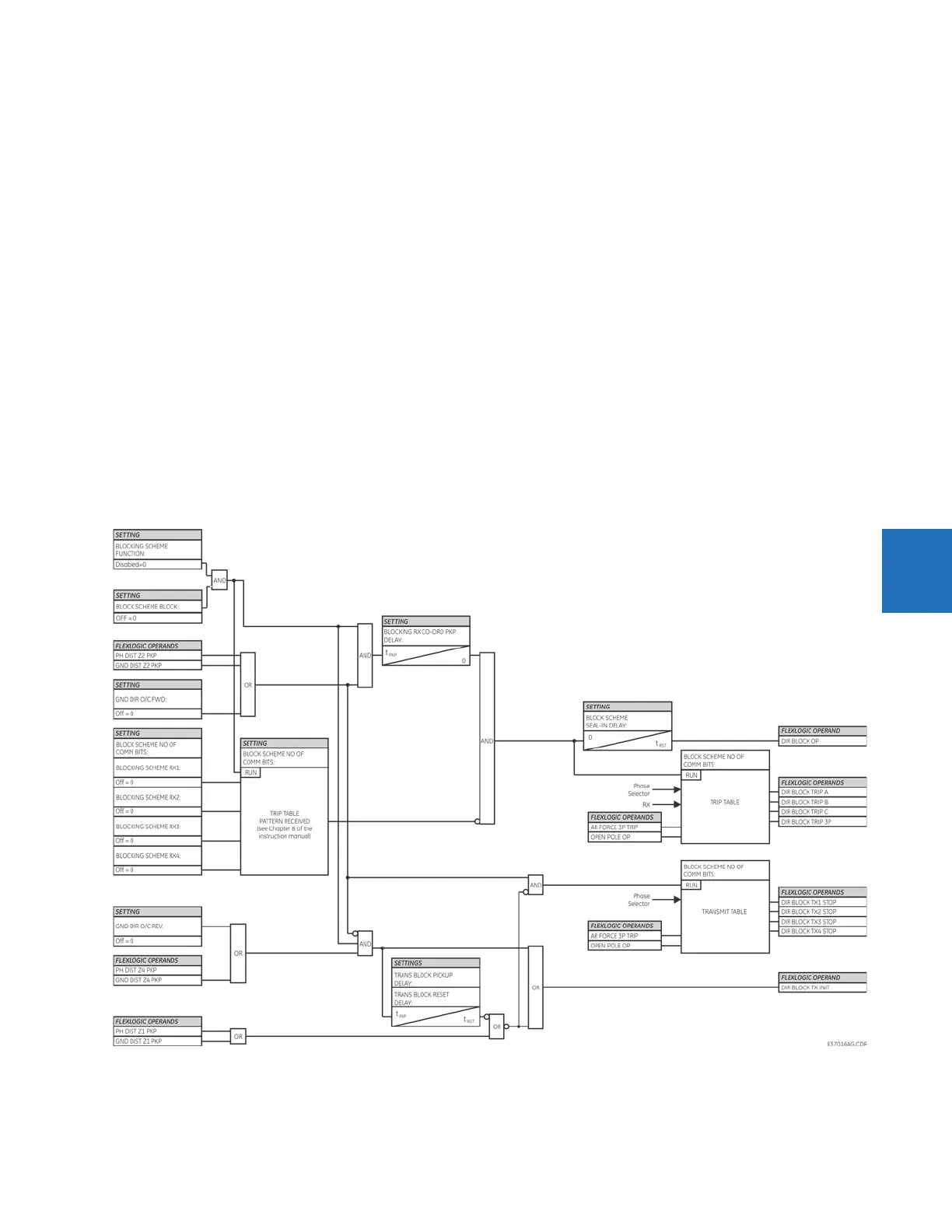CHAPTER 5: SETTINGS CONTROL ELEMENTS
L90 LINE CURRENT DIFFERENTIAL SYSTEM – INSTRUCTION MANUAL 5-391
5
Consider the selected protection element (or elements in combination) with the selection of GND DIR O/C FWD. For all the
forward external faults seen by an element used as
GND DIR O/C FWD at one end of the line, the reverse-looking element
used as GND DIR O/C REV at the other end should picks up and provides a blocking signal. For greater security and to
overcome spurious directional element operation during transients, adding a pickup delay greater than the pilot channel
delay to the reverse directional element is recommended.
BLOCK SCHEME NO OF COMM BITS — This setting specifies the number of bits of the communications channel available for
the scheme. With only one bit available, the scheme sends the blocking signal by asserting the DIR BLOCK TX INIT FlexLogic
operand. Use this operand to start the channel (set the blocking signal). On internal faults, the scheme removes the
blocking signal by asserting the DIR BLOCK TX1 FlexLogic operand.
For tripping the scheme responds to lack of the blocking signal on bit 1 (
BLOCK SCHEME RX1 setting). The scheme uses only
local fault type identification provided by the phase selector to assert the output operands DIR BLOCK TRIP A, B, C, and 3P.
To take advantage of the four-bit blocking scheme, initiate the blocking signals from a disturbance detector. This can be
accomplished by using both 50DD and DIR BLOCK TX INIT to assert the blocking signal. Subsequently, specific bits are de-
asserted by the scheme based on the phase selection providing the peer relay with more information on the fault type.
Otherwise, the peer relay issues a three-pole trip upon receiving the bit pattern (0, 0, 0, 0).
BLOCK SCHEME RX1 through BLOCK SCHEME RX4 — These settings allow the user to select the FlexLogic operands that
represent the receive signals for the scheme. Typically input contacts interfacing with a signaling system are used. In
single-bit applications,
BLOCK SCHEME RX1 must be used. In two-bit applications, BLOCK SCHEME RX1 and BLOCK SCHEME RX2
must be used. In four-bit applications,
BLOCK SCHEME RX1, BLOCK SCHEME RX2, BLOCK SCHEME RX3, and BLOCK SCHEME RX4
must be used.
Figure 5-221: Directional blocking scheme logic

